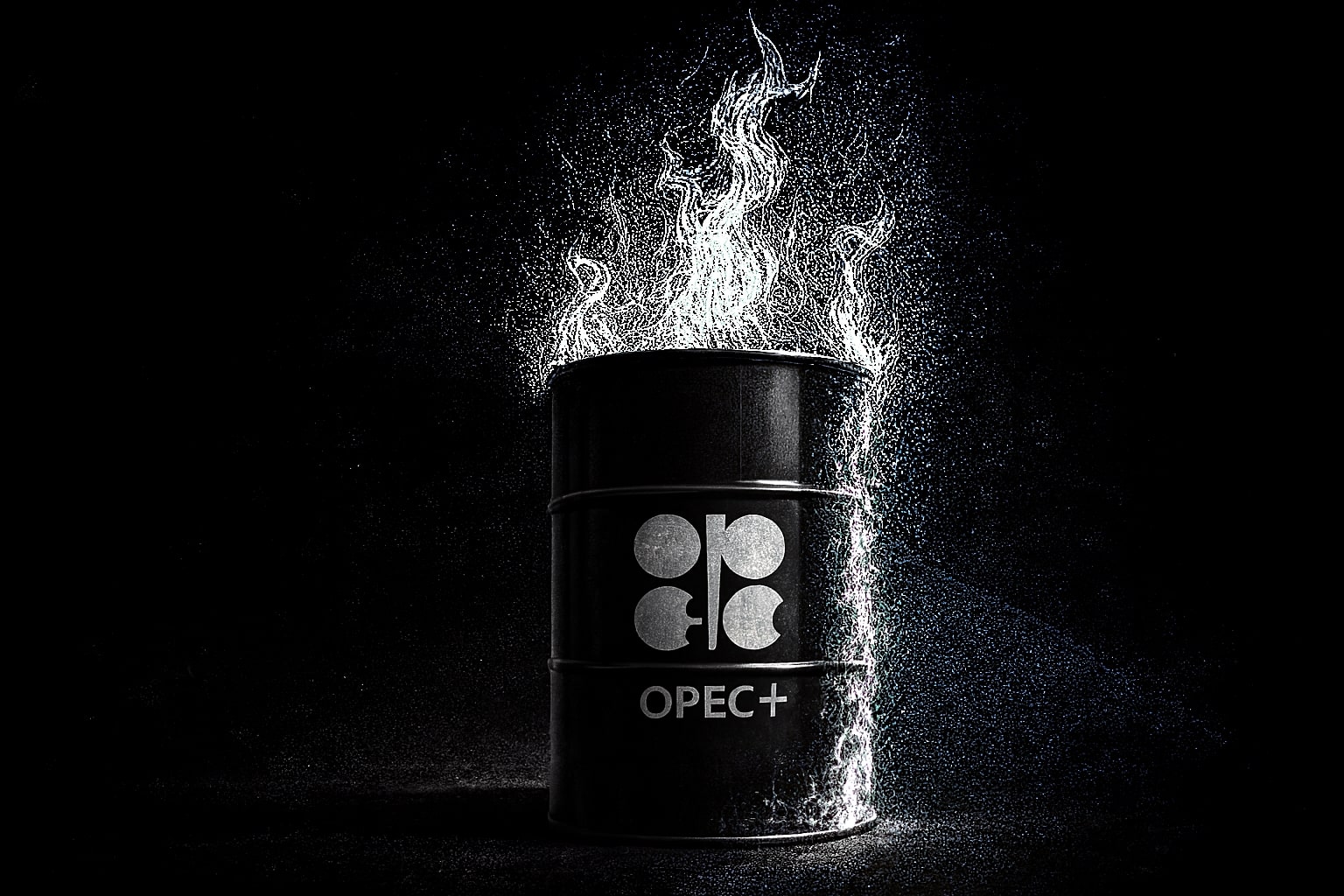Oil Prices Climb As WTI And Brent Hit Multi-Week Highs On Trade Optimism And Sanctions Pressure
WTI And Brent Prices Surge On Positive US-China Trade Developments
Oil prices are rallying, with WTI (CL=F) now trading at $66.29 per barrel and Brent (BZ=F) pushing higher to $68.02 — both reaching their strongest levels in more than two months. The gains come amid renewed hopes of a US-China trade agreement after President Trump confirmed progress on key elements of the deal, including China's commitment to supply rare earths and the easing of US restrictions on Chinese students. While final approval from both Trump and President Xi remains pending, the positive signals have removed a major source of downside risk for global oil demand.
Geopolitical Tensions Escalate As EU Pushes New Russian Sanctions
Oil markets are also reacting to aggressive moves from the European Union, which has proposed cutting the G7 oil price cap on Russian seaborne crude from $60 to $45 per barrel. In addition, Brussels is seeking to sanction an additional 77 vessels from Russia's shadow tanker fleet, bringing the blacklist total to over 400 ships. The EU also plans to fully ban the future use of Nord Stream 1 and 2 pipelines, aiming to choke off key revenue streams for Moscow. Russian officials have condemned the moves as destabilizing to global energy markets, while Ukrainian President Zelensky is urging an even deeper cap of $30 per barrel.
Saudi Arabia Signals Long Oil Price War As OPEC+ Increases Output
Saudi Arabia’s strategy is now coming into sharper focus, with Bank of America warning that Riyadh is preparing for a "long and shallow" oil price war aimed at reclaiming market share, particularly from vulnerable US shale producers. OPEC+ is adding 411,000 barrels per day in July, marking the fourth consecutive monthly output hike. Saudi Arabia accounted for 2 million bpd of OPEC+ cuts before the recent unwind and is now using increased production to drive strategic leverage. However, the Kingdom faces its own fiscal challenges, needing Brent at $96.20 per barrel to balance its 2025 budget — a level nearly $30 above current prices.
US Shale Sector Under Pressure As Rig Counts Decline
US shale producers appear less resilient this time around. According to the Dallas Fed Energy Survey, many drillers require WTI prices above $65 per barrel to remain profitable — just where current prices are hovering. Rig counts have already declined 4% year-on-year and now sit 7% below their five-year average. Rising equipment costs, tariffs on imported steel, and geological limitations are also capping the sector’s growth potential. The EIA projects only a modest US crude output increase to 14 million bpd by 2027, up from 13.2 million bpd in 2024.
Nigerian Oil-Backed Loan Deal Falters As Prices Fall
Nigeria’s attempt to secure a $5 billion oil-backed loan from Saudi Aramco is faltering amid Brent’s recent decline. The deal — Nigeria’s largest of its kind — would require Abuja to pledge at least 100,000 bpd of crude, a challenging commitment given falling prices and existing obligations. Nigeria is already using 300,000 bpd to service prior oil-backed loans. The recent drop in Brent from over $82 in January to $65 has spooked potential lenders, raising concerns about delivery risks and the loan's viability.
Technical Picture Turns Bullish For Both WTI And Brent
From a technical standpoint, WTI is threatening a breakout above $65, with the next key target at the 200-day EMA. A close above this level could open the path toward $68. Conversely, the 50-day EMA offers strong support on any pullback. Similarly, Brent is pressing against the $68 resistance zone. A breakout here could fuel a move toward its own 200-day EMA, with recent buying activity suggesting continued accumulation. Analysts see short-term pullbacks as potential buying opportunities given the market’s improving technical backdrop.
US Macro Data Supports Oil Demand Outlook
The macro environment is also turning more supportive. US CPI data showed a smaller-than-expected increase in May, reinforcing expectations that the Federal Reserve could begin cutting rates by September. Lower rates typically boost economic activity and fuel demand. Additionally, the World Bank’s downgrade of global GDP growth to 2.3% for 2025 — the weakest since 2008 — highlights lingering demand risks, but for now easing inflation is helping offset those concerns.
Speculators Brace For Volatility As Futures Positioning Hits Extremes
Speculative positioning reflects mounting uncertainty. Futures traders are heavily hedged, with open interest in WTI calendar spread options hitting record levels. The market is pricing a tight supply environment through 2025, followed by oversupply risk in 2026. The WTI July-August spread recently narrowed to 93 cents, while the December 2025-December 2026 spread widened to 53 cents — a classic "hockey-stick" curve signaling diverging short- and long-term views.
Iran And Middle East Risks Add To Supply Uncertainty
Middle East tensions remain elevated. Iran has threatened to strike US bases if nuclear talks collapse, ensuring its sanctioned oil supplies remain constrained. Meanwhile, OPEC+’s gradual supply increases are being partially absorbed by rising domestic demand, especially in Saudi Arabia, helping to stabilize prices. But with geopolitical risks intensifying and sanctions tightening, traders are bracing for continued volatility.
Outlook: Oil Market Poised Between Geopolitics And Supply Risks
Oil’s current rally is being driven by a complex interplay of factors — improving trade relations, aggressive sanctions, Saudi supply strategy, and fragile US shale output. With WTI holding near $66 and Brent approaching $68, the next test will come from the G7’s final decision on the Russian price cap, OPEC+ production management, and the trajectory of global demand. Speculators remain heavily positioned for volatility, suggesting that large moves are likely in either direction over the coming weeks.




















